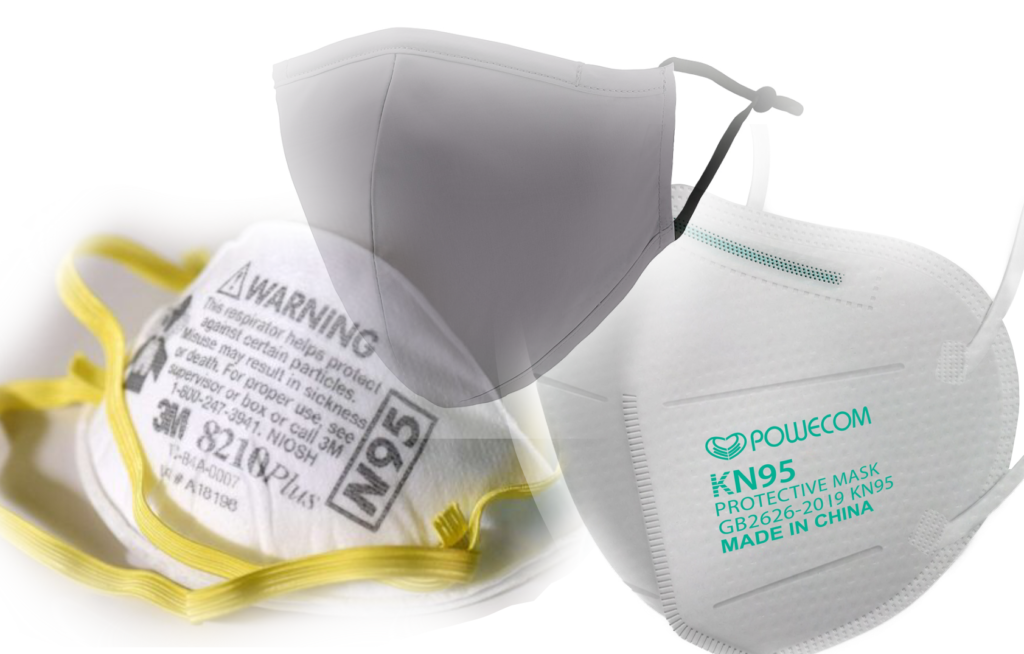A face of our current reality is that masks are now a staple of clothing, but each type comes with distinct downsides.
The perfect mask that blocks out all invading foreign particles, fits snugly like a glove, is affordable, fashionable and comfortable is not on the market. When one focuses on a specific characteristic they want in their mask, however, mask-shopping is no longer as intimidating.
Listed below are the best mask options on the market, with their corresponding benefits and drawbacks.
N95: Falcon pick — the 3M for $1.20/mask
This is the mask that started it all. For the first six months of the pandemic, I exclusively wore it whenever I had to leave my house. While they were difficult to find, and cost as much as $100 for one mask at the beginning of the pandemic, they are now quite affordable.
N95s are the most protective commercial masks available, and offer medical-grade protection from almost any kind of infection. No other mask comes close to the protection offered by the N95 mask.
The only major drawback of these masks is their discomfort. They restrict breathing and are attached tightly to the face, making it impossible to wear painlessly for prolonged periods of time.
It is also unnecessary to undergo the highly uncomfortable experience of wearing an N95 for eight hours every single day. While its protection is valuable to people who need the extra protection due to pre-existing health conditions, other masks such as the KN95 can reliably block out the virus while providing a substantially greater degree of comfort.
While I wore an N95 mask for an entire day while traveling on a plane this summer, the marginal benefit of using an N95 over a KN95 isn’t worth subjecting oneself to the discomfort on a daily basis.
KN95: Falcon pick — the WWDOL for $1.15/mask
The KN95 is a more casual version of the N95: It is more comfortable, but less protective. However, it is still a medical-grade mask, and offers significantly more protection than most cloth masks. This balance between heavy protection and a modicum of comfort has made the mask one of the most commonly worn masks at the school during the omicron surge.
Indeed, in an email, the administration announced that they “will supply each SHS student with two [K]N95 masks,” and they can be bought in bulk for only about $1 to $2 each. By comparison, cloth masks that offer a smaller degree of protection from the virus are often 10 times as expensive.
One downside is that the nose bridges are often difficult to tighten, which results in many students around campus wearing the masks loosely. This allows particles to come in from above the mask, making it less effective than its N95 counterpart. Thus, students wearing KN95 masks should follow the proper protocol and wear them appropriately.
Cloth Masks: Falcon pick — the Proper Cloth for $20
These masks are the most comfortable by far; some are designed to be so uninhibiting that their presence can barely be felt. However, they prioritize comfort and fashion over protection. The KN95 mask is better because it sacrifices a small amount of comfort for significantly greater protection.
With the omicron variant being extremely transmissible, it is important to recognize that the only masks approved by the CDC at the moment are KN95 and N95 masks. Although some students have gotten used to wearing cloth masks, they compromise the safety of themselves, their teachers and their fellow students.
Masks are tricky to choose as buying the correct mask requires considering various criteria: comfort, fit, quality, material, effectiveness, color and fashion. However, recognizing the strengths and weaknesses of different types of masks can enable students and the community at large to make accurate decisions regarding which mask to use on a daily basis.


























